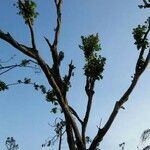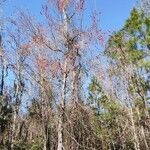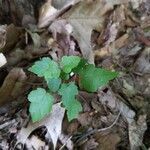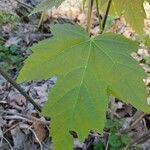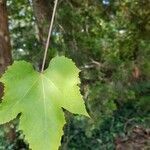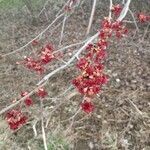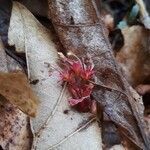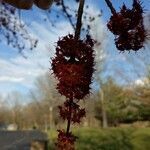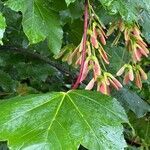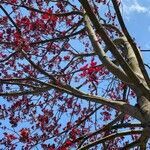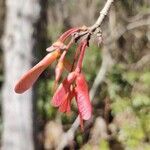A deciduous tree. It grows 30 m high and spreads 5 m across. The trunk is 60 cm across. The stem is like an erect column. It has smooth light coloured bark. The crown of the tree is rounded or open. Young twigs, leaves and buds are usually bright red. The leaves are deeply divided like the fingers on a hand. There are 3 larger leaf lobes and 2 smaller side lobes. The leaves are 10 cm long. The edges of the leaves are like teeth on a saw. The leaves are bright green on top and bluish green underneath. They turn red in the autumn. The red flowers occur in many branched clusters. They stick upwards. The seeds occur double in seed containers with wings at an angle. The wings are 12-25 mm long.
